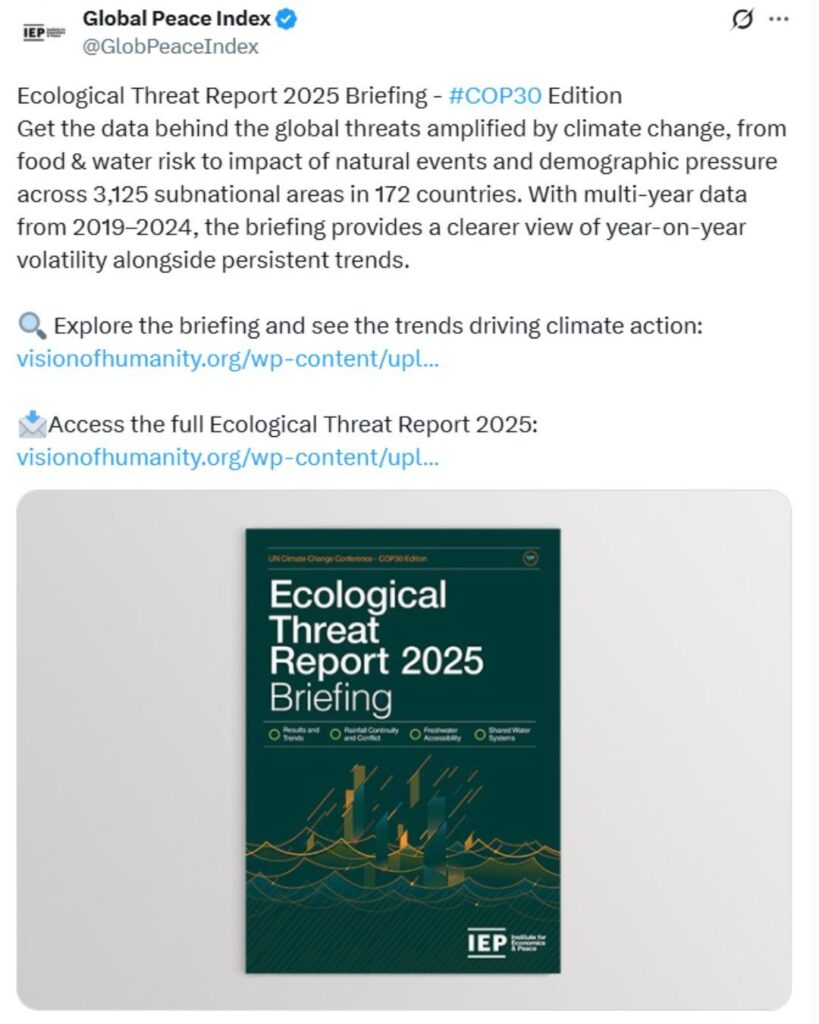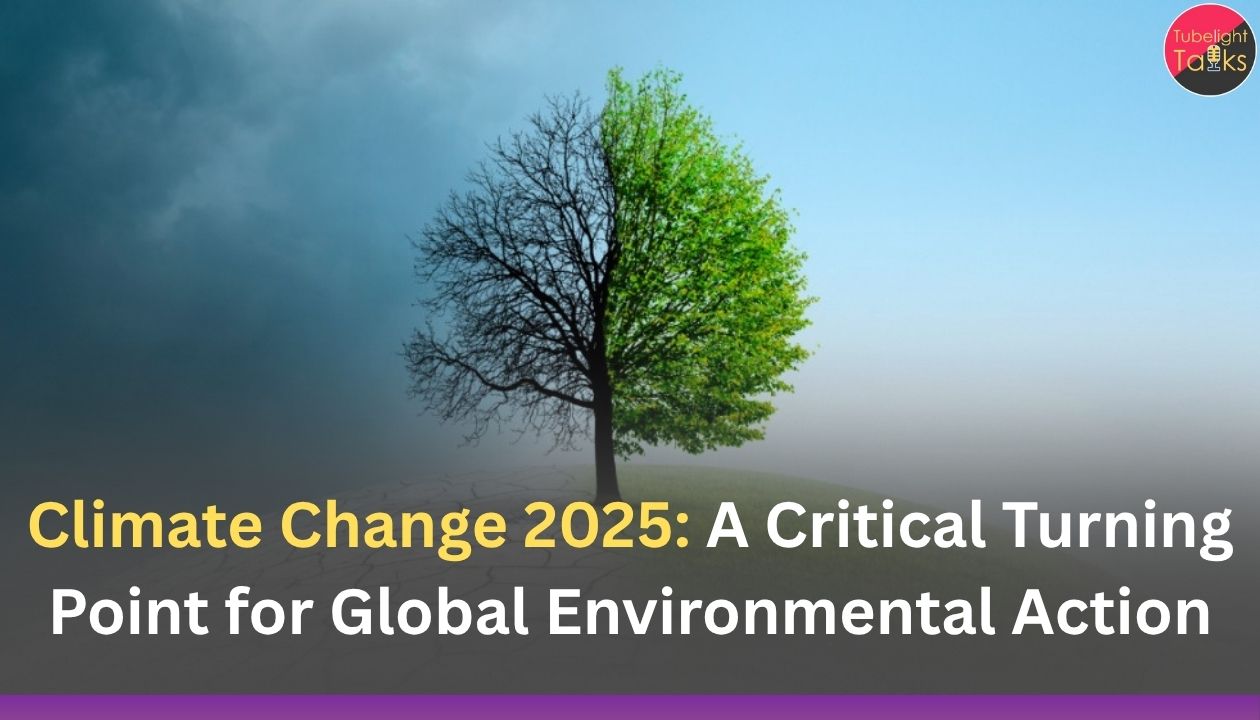Climate Change 2025: Climate change has become the defining issue of our time. What was once predicted to happen “in the future” is now unfolding rapidly around us. The year 2025 stands at a crucial crossroads — with extreme weather worsening, global inequality widening, and the world’s ecosystems under severe pressure. The COP30 Summit in Belém, Brazil, is widely regarded as one of the last major global opportunities to implement meaningful climate action.
This article explores the key climate issues of 2025, the warnings delivered by scientists, the challenges faced by developing nations, and the rising global demands for climate justice.

COP30: Why the Summit Matters More Than Ever
The UN Climate Change Conference (COP30) is one of the most anticipated environmental events in recent history. Taking place in Belém, Brazil — at the edge of the Amazon rainforest, COP30 has become symbolic of the urgent need to protect the world’s largest carbon sink.

Key Goals of COP30
- Finalizing global commitments to keep warming below 1.5°C.
- Expanding climate finance for poorer nations.
- Creating a strong adaptation strategy for countries facing extreme weather.
- Reducing dependence on fossil fuels and increasing investments in renewable energy.
- Protecting forests, indigenous lands, and biodiversity hotspots.
Why COP30 Is Considered ‘The Last Chance’
Scientists warn that by 2030, humanity will cross irreversible climate tipping points — including:
- Melting ice sheets
- Collapse of coral reefs
- Mass species extinction
- Irreversible changes to rainfall patterns
If countries fail to commit to strict emissions cuts, the future climate will be beyond human control.
Extreme Weather in 2025: The New Normal
The world has already witnessed alarming climate events in just the first part of 2025.
Record-breaking heatwaves
Countries across Europe, South Asia, and the Middle East reported temperatures above 50°C, making daily life nearly impossible.
Floods
Areas in India, Bangladesh, China, and Brazil experienced catastrophic floods that displaced millions.
Wildfires
Massive fires in:
- The Amazon
- California
- Australia
- Southern Europe
have destroyed forests, wildlife, and human settlements.
Cyclones and hurricanes
Storm patterns are becoming more intense, unpredictable, and destructive, with several storms reaching Category 5.
Droughts
Africa’s Horn region and parts of Latin America are facing severe water shortages, leading to food insecurity.
Extreme weather is no longer a rare event — it is the new reality.
Climate Justice: A Rising Global Movement
Climate change affects everyone, but not equally. Developing nations — who contributed the least to global emissions — are the ones suffering the most. This injustice has led to a powerful global movement demanding fairness, responsibility, and reparations.
What is climate justice?
It is the belief that those historically responsible for climate change must:
- Pay for climate adaptation in poorer nations
- Provide compensation for loss and damage
- Reduce emissions faster
- Support sustainable development in vulnerable regions
Why is this important?
Without climate justice, developing nations will:
- Lose their agricultural productivity
- Suffer from extreme weather
- Face mass migration
- Struggle with poverty and hunger
Climate justice ensures that climate action is fair, inclusive, and ethical.
Adaptation Finance: Developing Nations Need Support
One of the biggest issues discussed at COP30 is adaptation finance, which refers to funding for countries that must adapt to climate impacts they did not create.
Adaptation includes:
- Building flood-resistant infrastructure
- Developing drought-tolerant crops
- Creating efficient early warning systems
- Protecting coastal communities from rising seas
- Restoring forests and ecosystems
However, most developing nations lack the financial resources to carry out these actions.
Why the current funding is not enough
While global leaders have pledged billions, the amount falls short of what is required. Experts estimate that developing nations need $300 billion annually to adapt — far beyond what is currently being provided.
Without additional support, millions will be forced into poverty, instability, and migration.
The Amazon Rainforest: Earth’s Lungs Under Threat
The Amazon rainforest is essential for regulating global temperatures. It absorbs billions of tons of carbon annually and is home to thousands of species. However, deforestation, mining, fires, and illegal land seizure continue to destroy it at an alarming rate.
Why saving the Amazon is crucial
- It stabilizes global climate
- It ensures rainfall for agriculture
- It protects biodiversity
- It supports indigenous cultures
- It prevents carbon emissions from deforestation
The location of COP30 in Brazil emphasizes the world’s responsibility to protect this vital ecosystem.
The Ocean Crisis: Rising Seas and Dying Marine Life
Oceans absorb 90% of global warming, making them the planet’s largest heat sponge. As a result:
- Coral reefs are bleaching
- Marine ecosystems are collapsing
- Coastal cities are sinking
- Fisheries are declining
Major risks
- Millions living in coastal cities like Mumbai, New York, Manila, Jakarta, and Lagos are vulnerable.
- Rising sea levels may displace up to 250 million people by 2050.
Combating this crisis requires massive global cooperation.
The Energy Transition: Fossil Fuels vs. Renewables
One of the biggest challenges is transitioning from fossil fuels to clean energy.
Current global situation
- Fossil fuels still dominate the energy market.
- Renewable energy investments are growing but not fast enough.
- Oil-producing nations are resistant due to economic dependence.
- Technology gaps make renewable adoption slow in poorer countries.
Hopeful trends
- Solar and wind energy are becoming more affordable.
- Electric vehicles are becoming mainstream.
- Green hydrogen is gaining global attention.
- Many countries pledge net-zero emissions.
Still, to achieve climate goals, the world needs to triple its renewable capacity by 2030.
Food Security and Agriculture Under Threat
Climate change is damaging the world’s food system.
Major impacts
- Heatwaves kill crops
- Droughts reduce yields
- Floods destroy agricultural land
- Pests spread rapidly due to warming temperatures
This threatens global food supply, increases prices, and leads to hunger — especially in developing nations.
Climate Migration: A Crisis Already Unfolding
As climate disasters worsen, millions are being forced to leave their homes.
Reasons for displacement
- Drought
- Flood
- Cyclones
- Desertification
- Rising seas
By 2050, experts predict over 1 billion climate migrants worldwide.
Countries must develop ethical migration frameworks to ensure human dignity and safety.
Conclusion: The Compassion-Based Environmental Vision of Annapurna Muhim
Climate change is not only an environmental issue — it is a humanitarian crisis. And in a world suffering from rising temperatures, deadly storms, and growing inequality, compassion becomes the most powerful solution. This is where Annapurna Muhim of Saint Rampal Ji Maharaj provides a deeply meaningful message.
The logo —
“Roti, Kapda, Siksha, Chikitsa Aur Makan Har Gareeb Ko Dega Kabir Bhagwan” —
represents a world where basic needs are a fundamental right, not a privilege.
Climate change will hurt the poor the most. Hunger, displacement, health issues, and loss of shelter will become more common. The vision of Annapurna Muhim teaches:
- No one should sleep hungry
- No one should suffer from lack of healthcare
- No child should be denied education
- Every family deserves shelter and dignity
These humanitarian principles align perfectly with the idea of climate justice, where the world protects the vulnerable. If global leaders adopted compassion-based policies — ensuring food, housing, healthcare, and education for all — climate adaptation would become more effective and equitable.
Humanity is the true climate solution.
Read Also: 2025 Likely to Be 2nd or 3rd Warmest Year on Record, Warns World Meteorological Organization
FAQs
Q1. What is COP30 and why is it important?
COP30 is the 2025 UN Climate Conference held in Brazil, considered one of the final opportunities for global leaders to take meaningful action against climate change.
Q2. Which countries suffer the most from climate change?
Developing nations in Africa, Asia, and Latin America face the worst impacts, despite contributing the least to global emissions.
Q3. What is climate justice?
Climate justice demands that wealthy nations — who caused most emissions — support poorer nations with finance, technology, and resources to adapt to climate change.
Q4. How is extreme weather connected to climate change?
Global warming increases the intensity of storms, heatwaves, wildfires, floods, and droughts, making extreme weather more frequent and destructive.
Q5. What role does Annapurna Muhim play in this context?
Annapurna Muhim represents humanitarian values such as feeding the hungry, providing education, shelter, and healthcare — principles that align with ethical climate action.










